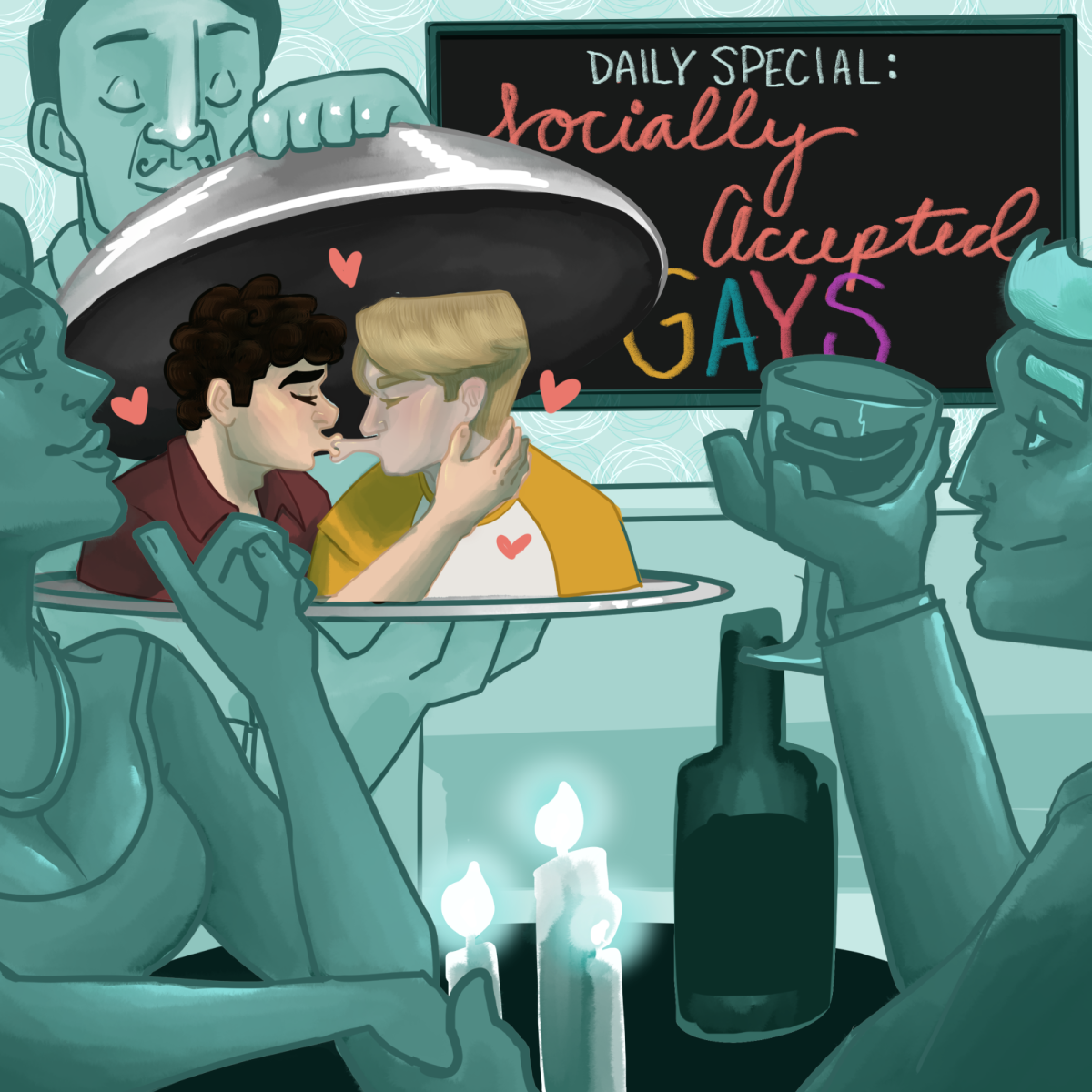To justify queerness to heterosexual audiences, queer media loses its nuance and limits exploration of other topics besides sexuality. This stems from new queer media treating queerness as a political concept rather than what it actually is: human expression.
On March 20, Netflix announced several new titles coming to the platform in 2024, including a renewal of Alice Oseman’s “Heartstopper,” which will receive its third season this October. This news hardly comes as a shock, as the previous season of the show received 6.1 million watchers on release, along with fellow queer Netflix original “Young Royals” garnering 11 million views in one week in its third and final season. This phenomenon of cheesy queer media gaining momentum in the public eye is nothing new: Greg Berlanti’s 2018 film “Love, Simon” is Twentieth Century Fox’s third highest-grossing teen film. While these titles all carefully and lovingly tackle themes like homophobia and coming out, cementing themselves as titles that queer youth deserve to grow up with, their affirmative and warm nature dampens the quality of the shows themselves by sacrificing nuance.
Queer media that goes beyond simple representation often stands the test of time. When you think of a queer movie, chances are you think of titles such as Ang Lee’s “Brokeback Mountain” or James Ivory’s “Maurice.” The relationship dynamics of these films are not ones that should be the standard of a queer relationship; in both films, one man pathetically vies for the affection of the other, who is incredibly repressed because of the suffocating nature of a heteronormative society. While these films aren’t encouraging you to model your relationships after them, they add an emotional complexity to the love story genre. “Brokeback Mountain” goes beyond treating queerness as a monolith, considering the leads are two very masculine men. “Maurice,” similarly, has a very multifaceted outlook on love and, in contrast to other queer films of its time, has a happy ending — especially important given it released during the AIDS crisis. What these films offer is an affirmation that love is not easy in a complicated but realistic way.
Insisting on palatability both reduces nuance in queer media and limits the themes that fiction can explore. Since “Brokeback Mountain” isn’t explicitly focused on being an emblem of diversity or a “gay story,” it manages to have actual dimensionality when talking about masculinity and sexual orientation. On the other hand, while on paper “Heartstopper” has a diverse range of characters, they fail to lack any true depth outside of being tokens. This includes a Black transgender woman, Elle Argent (Yasmin Finney), as well as other people of color like her love interest Tao Xu (Will Gao) and one of her closest friends, Tara Jones (Corrina Brown).
The majority of the first season of “Heartstopper” was filmed in Kent — presumably a model for the show’s setting — which, as of 2021, has an 88% white population. This sentiment is reflected in the show, as the main characters, Nick Nelson (Kit Connor) and Charlie Spring (Joe Locke) are white, as well as most of the minor characters.
Despite the homogeneity of the cast and setting, the show doesn’t have the courage or emotional depth to approach the actual struggles faced by people of color in such an environment. There is not a single conversation on the loneliness that people of color face in predominantly white communities, nor are there any major cultural signifiers in the show aside from Elle and Tara’s ethnic hairstyles. Because “Heartstopper” fancies itself as a champion of queer joy and little else, its rallying cry for diversity and universal acceptance pales when its nonwhite characters are not allowed to be emotionally complex.
That isn’t to say that “Heartstopper” is unnecessary; it very much is. It shows a healthy queer relationship and a positive depiction of coming out, something all young queer people can benefit from seeing. But “Heartstopper,” despite its popularity, isn’t the quintessential title for queer joy. In fact, it’s hardly the first title to have this premise. Take Thomas Bezucha’s “Big Eden,” which centers around an out gay man in a tumultuous relationship with an incredibly closeted person who has been in his life for a while, only to be swept off his feet by another man who may not completely understand his sexuality but isn’t afraid of it. Queer joy isn’t a male-centric concept either. For instance, there’s Jamie Babbit’s cult classic “But I’m a Cheerleader,” which also deals with heavy subject matter like conversion therapy, but ultimately has a good ending without giving up a thoughtful narrative.
While “Heartstopper” and “Young Royals” are important pieces of fiction, don’t let them overshadow queer media as a whole. Comets who are unsatisfied with newer queer work should look to the classics for nuance on the complexity of love.






